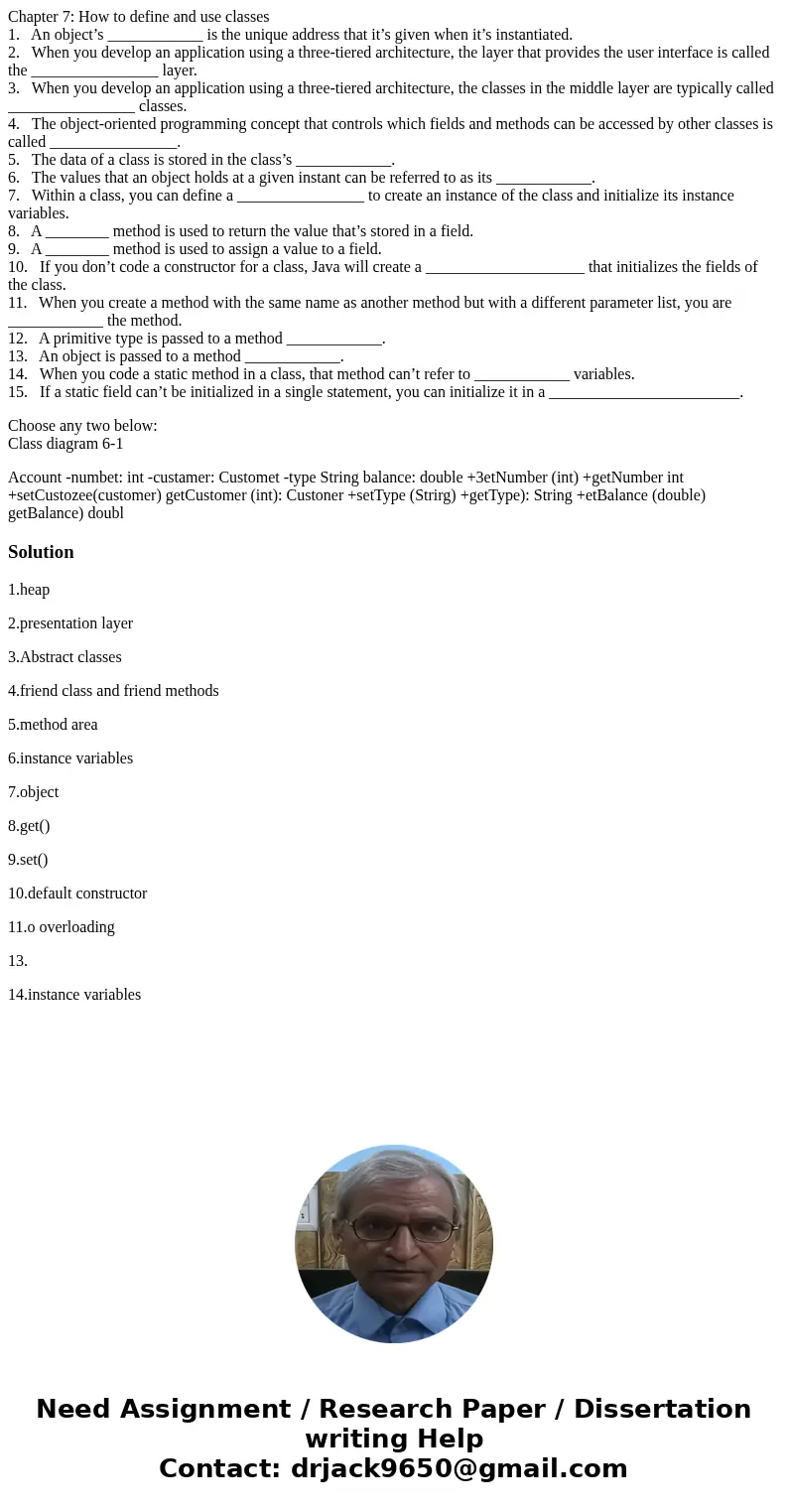Chapter 7 How to define and use classes 1 An objects is the
Chapter 7: How to define and use classes
1. An object’s ____________ is the unique address that it’s given when it’s instantiated.
2. When you develop an application using a three-tiered architecture, the layer that provides the user interface is called the ________________ layer.
3. When you develop an application using a three-tiered architecture, the classes in the middle layer are typically called ________________ classes.
4. The object-oriented programming concept that controls which fields and methods can be accessed by other classes is called ________________.
5. The data of a class is stored in the class’s ____________.
6. The values that an object holds at a given instant can be referred to as its ____________.
7. Within a class, you can define a ________________ to create an instance of the class and initialize its instance variables.
8. A ________ method is used to return the value that’s stored in a field.
9. A ________ method is used to assign a value to a field.
10. If you don’t code a constructor for a class, Java will create a ____________________ that initializes the fields of the class.
11. When you create a method with the same name as another method but with a different parameter list, you are ____________ the method.
12. A primitive type is passed to a method ____________.
13. An object is passed to a method ____________.
14. When you code a static method in a class, that method can’t refer to ____________ variables.
15. If a static field can’t be initialized in a single statement, you can initialize it in a ________________________.
Choose any two below:
Class diagram 6-1
Solution
1.heap
2.presentation layer
3.Abstract classes
4.friend class and friend methods
5.method area
6.instance variables
7.object
8.get()
9.set()
10.default constructor
11.o overloading
13.
14.instance variables

 Homework Sourse
Homework Sourse